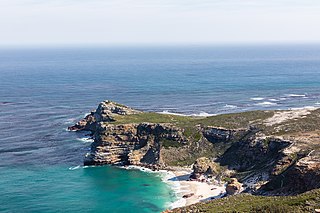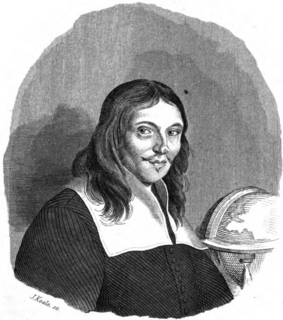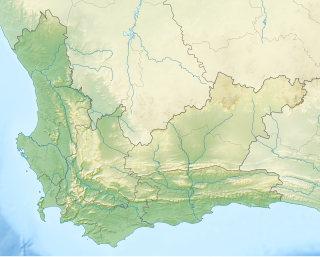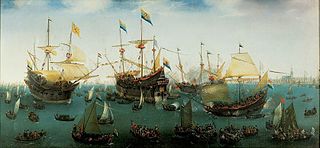The Fable
The earliest known version, written by Oliver Jenkins, appeared in the Cape Times of 23 December 1939 under the title: ‘The Vanished Treasure of Vergelegen’. [10] According to this, the skipper and three farmers had conspired to deliberately run the ship aground. The treasure from the vessel was taken to the farm Vergelegen in the Hottentots Holland, where one of the farmers and four slaves buried it in the octagonal garden behind the homestead. Three of the slaves were later found murdered, and the other absconded. The farmer also died mysteriously when the conspirators went to dig up the treasure, so that nobody knew where it had been hidden. The Governor rounded up the remaining conspirators and submitted them to trial. The skipper was broken on the wheel, strangled and hanged, and the two remaining farmers were sent in chains to Batavia. Jenkins gave no sources for his story, but the use of the names of historic persons may be an indication of the creative use of snippets from the archives. Murder in the vineyards of Vergelegen, and a hidden treasure, had been part of an old oral tradition in the Hottentots Holland. [11]
The story by Jenkins was repeated with minor changes by the well-known authors Eric Rosenthal (1951) [12] and Lawrence Green (1958). [13] Neither mentions any specific sources, but each alleges that his story is based on old documents. As a result, this clever fiction has subsequently been accepted generally as a credible legend.
The true Schoonenberg story
Between 2011 and 2017 all documentation pertaining to the Schoonenberg in the Cape archives had been investigated systematically. From this emerged the real story of the ship and its crew. [14] [15] [16]
The 800-ton Schoonenberg was built for the Amsterdam Chamber of the VOC as a typical 40 m three master for trade with the East. She was launched in 1717 and left on her first visit to the East in 1719, only returning to the Netherlands in 1721. Albertus van Soest was the skipper for the second voyage which departed from Texel on 15 December 1721. It was also his second journey to the East as skipper. Stop-overs at the Cape usually lasted from three to six weeks, and Van Soest became friends with Jacob van der Heijde who supplied meat to passing ships. On 21 July 1722 the Schoonenberg arrived at Batavia.
The disastrous journey
In the company of another East-Indiaman, the Anna Maria, the Schoonenberg sailed from Batavia on 25 September 1722. Her 700-ton cargo consisted of sugar, tea, coffee, pepper and sapan wood to the value of 294 411 guilder. There were 110 men aboard, and the ship carried 28 cannon. The two vessels lost contact shortly before the Schoonenberg saw the coast of Africa just to the north of Algoa Bay on the morning of 16 November. During the following days she sailed south-west and then due west. At midday on 19 November her latitude was measured as 34 degrees 54 minutes south, that is about 8 km further south than Cape Agulhas, the most southern promontory of the continent. The skipper ordered a due westerly course to be maintained.
According to the officers, at sunset land was visible northwest of west, about 60 km off. Due west it was too hazy to see anything. It was a standing order of the Company that depth soundings had to be taken when land was being approached. The officers asked the skipper whether this should not be done. His reply, later confirmed by the men who stood at the helm, was that they knew where they were - on the sand (that is on the Agulhas Bank) - and that a depth sounding would unnecessarily retard their journey. It would be duly done the next morning. Before a stiff east-northeasterly breeze the ship journeyed on with all sails set.
Second mate Pieter Corver was on duty during the ‘dog watch’, that is from 24h00 till 04h00 the next morning. His brief was to alert the skipper and to steer away from the coast, should land be detected. Around 03h30 the lookout, Pieter Jansz, called out that there was land ahead. Corver acknowledged the call, but took no action. When the lookout called again, Corver went to alert the skipper, who had heard the second call and was already on his way to the deck. He immediately shouted for the rudder and sails to be adjusted so that they could move away from the land. The water depth was 12,5 m, but was decreasing rapidly. When the vessel responded sluggishly the daily anchor (bower anchor) was cast out, but the cable snapped when a brake was applied to slow down the ship. The dredge anchor, tied to the foremast, was then cast out. This caused the bow to veer to the north, but when its cable had run out, it also snapped. The depth was now only 7,5 m. The ship drifted sideways towards the reef, and the waves pushed it firmly on to the rocks with its bow facing the land, some 800 m off.
Water started rushing in, and after an hour or two the pumps could no longer cope. Many of the sailors were drunk as the liquor store had been looted. Some of the men went ashore on the ship's boat. The others made rafts, and so all reached land safely. The skipper and some of his officers stayed on board throughout the day and following night, while the violence of the waves caused the hull to crack in the middle, with the masts still standing. On the morning of 21 November the boat came to fetch the officers; the skipper was only taken off towards evening.
On the beach a hostile reception awaited him. According to him the officers had led the men to believe that he was responsible for the disaster which befell them. During the night he was manhandled and robbed in his tent by a bunch of ruffians.
The provisions they had brought from the ship were skimpy: 150 I of water, two barrels of barley and three live pigs. The next morning the skipper was informed by the officers that they had decided to walk to the Cape. About 84 men followed them, while some 20 stayed with the skipper. These men were completely unruly and went to the wreck at will to plunder and to fetch more liquor. Van Soest and his bookkeeper, Paulus Augier, had to carry pistols to protect them from the mutineers. It was only on 26 December that all of them left for the Cape with the second fact-finding mission.
According to all evidence there was never any hint of the deliberate stranding of the ship. Negligence yes, especially with the choice of a route dangerously close to the treacherous coast, and with the failure to take depth soundings. But the reason for the large departure from their planned course remains a mystery. Possible navigational errors cannot explain the full deviation of 12 km to the north. The well-known reverse eddies to the north, of the Agulhas current as it hits the Agulhas Bank, might well have played a role. On the Bank such side currents often reach more than 4 km per hour. Especially at night, the seamen could not have known that they were drifting off to the north, while steering west.
Action by the Governor and Political Council
On the afternoon of 24 November the Anna Maria sailed into Table Bay with the news that the Schoonenberg was stranded on the rocks near Cape Agulhas. Governor Mauritz de Chavonnes immediately sent someone to investigate. When he learnt that men from the ship were on their way to the Cape, he sent a delegation led by the deputy governor, Jan de la Fontaine, to Hottentots Holland to meet them at Vergelegen, the farm of Jacob van der Heijde. According to the officers, the ship and her cargo could not be salvaged and the men on the beach had little water and food. On the request of the officials, Jacob (Jacques) Malan, the farmer of the neighboring Morgenster, together with Gerrit Romond set out for the wreck. They left on 30 November with Malan's wagon loaded with emergency provisions. Two days later, two senior officials, Cornelis Valk and Johannes Pleunes, also left for Struis Bay on a fact-finding mission. Both wagons reached the stranded men on 6 December.
Meanwhile, the 84 men and their officers were cared for and entertained by Philip Morkel on his farm Onverwacht in the Hottentots-Holland. After their return to the Netherlands they expressed their gratitude by sending a tribute in the form of an epic poem called ‘Liefdekrans’ to the Morkels.
Finally, on 25 December, the second fact-finding mission confirmed in writing on the deck of the Schoonenberg that nothing could be salvaged. Van Soest and Augier were later sent by the Political Council to burn the wreck so that it would not mislead passing ships. This was accomplished on 26 January 1723.
In the course of 1723 some of the Schoonenberg sailors were placed on passing ships which had lost seamen. Those remaining, together with the officers, were repatriated to the Netherlands early in 1724.
Judicial Enquiry and Verdict
Fiscal Cornelis van Beaumont took affidavits from all those involved and in March 1723 formulated his charge-sheet. The skipper and his officers were charged with negligence for not taking depth soundings. The lawsuit before the Council of Justice, with a number of rounds of arguments and counter-arguments, continued till 11 September when judgment was passed. All four were found guilty. Van Soest and Corver were dismissed with loss of salary and rank, and were declared unfit to serve the Company again in any capacity. Their possessions and any salary owed to them were confiscated. First mate Willem Verbeek was dismissed with loss of salary and rank, and third mate Dirk Pest was reprimanded by the Council but retained his rank.
Following the loss of his rank, Van Soest did not want to travel as an ordinary passenger on a VOC ship. Assisted by his friend Jacob van der Heijde he secretly boarded an English vessel, the Berrington, and sailed for Europe at the end of 1723.
Suspicion of looting from the wreck
The Council of XVII in the Netherlands were dissatisfied with the long-drawn-out legal process, and even more so with the lenient sentence of Van Soest, whom they suspected of having beached the ship deliberately. After his return to his fatherland as a free man they resolved to charge him for the robbery of goods which he was supposed to bring from the East for people in Holland, and which he now alleged had been lost in the disaster.
The investigation of fiscal Adriaan van Kervel in 1726 on order of the Council of XVII did find evidence that a sealed package containing a hoard had been sent by Van Soest to Van der Heijde, and that locked cases and rolls of eastern materials had been offloaded at Vergelegen. But Van der Heijde and his family denied having seen this. No material evidence could be found and there was no indication that anything had later been transported from Vergelegen.
Replying to Van Kervel's report, the Council of XVII wrote that they would give the matter more thought. No documents were found indicating that anybody had ever been charged for looting.










